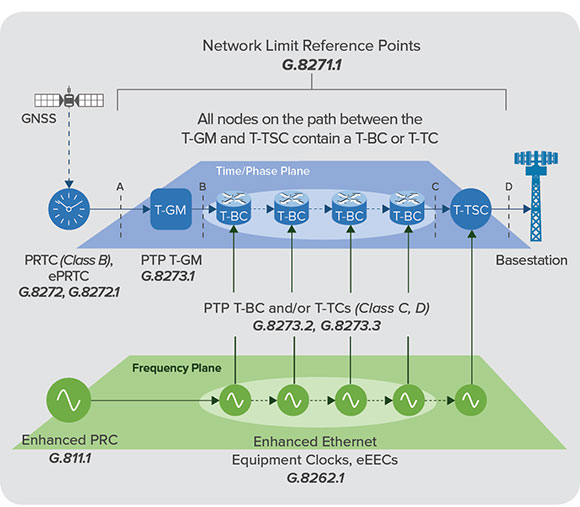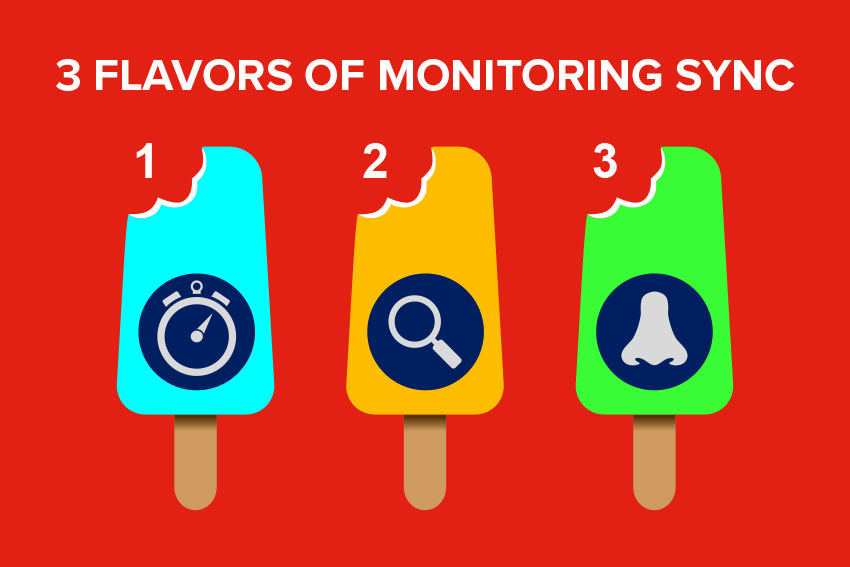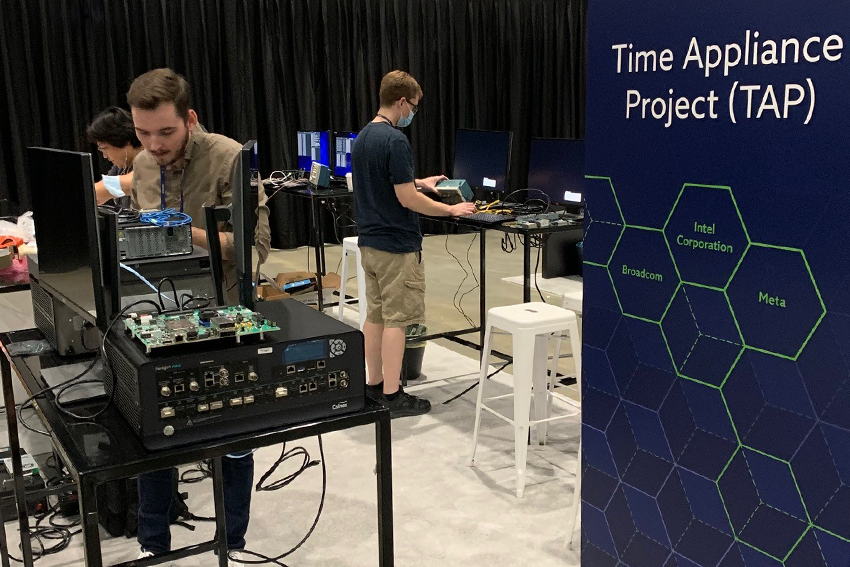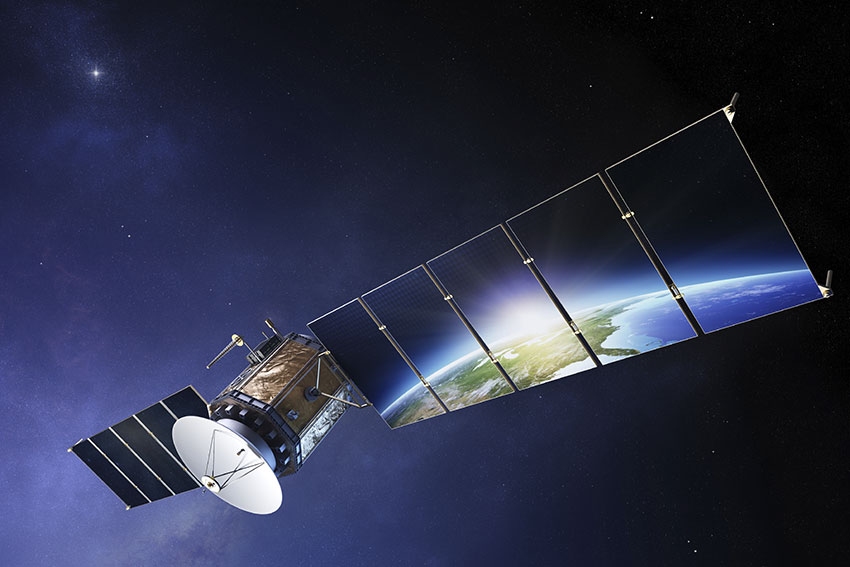In order to meet the extremely tight synchronisation requirements of the 5G fronthaul network, the ITU-T is defining a new set of “enhanced clocks”. These clocks have around an order of magnitude better performance than the clocks defined for the 3G and 4G networks.
The new ITU-T clocks under development include the Class B PRTC (G.8272), ePRTC (G.8272.1), ePRC (G.811.1), eEEC (G.8262.1) and the Class C and Class D T-BC (G.8273.2). New network limits are being defined for these clock types, for example, the enhanced frequency network k limit in G.8261, and the enhanced time and phase network limit in G.8271.1.
A schematic representation of the ITU-T clocks is shown in the following figure. The concept is to separate the time and frequency distribution into two independent planes, using enhanced SyncE to distribute the frequency, and PTP to distribute the time and phase. The planes can be independently managed and routed, allowing more freedom to the operator to handle failure conditions and re-routing.

Some other organisations are also looking at fronthaul synchronization. IEEE802.1CM is a project looking at the use of time sensitive network techniques in Ethernet. The idea is to re-use the ITU-T clock types, but add extra capabilities such as time-aware shaping (defined in IEEE802.1Qbv) and pre-emption (IEEE802.1Qbu). IEEE1914.1 is also looking at defining the performance of the transport network in order to meet the fronthaul requirements.
Tim Frost
Strategic Technology Manager, Calnex Solutions.








































